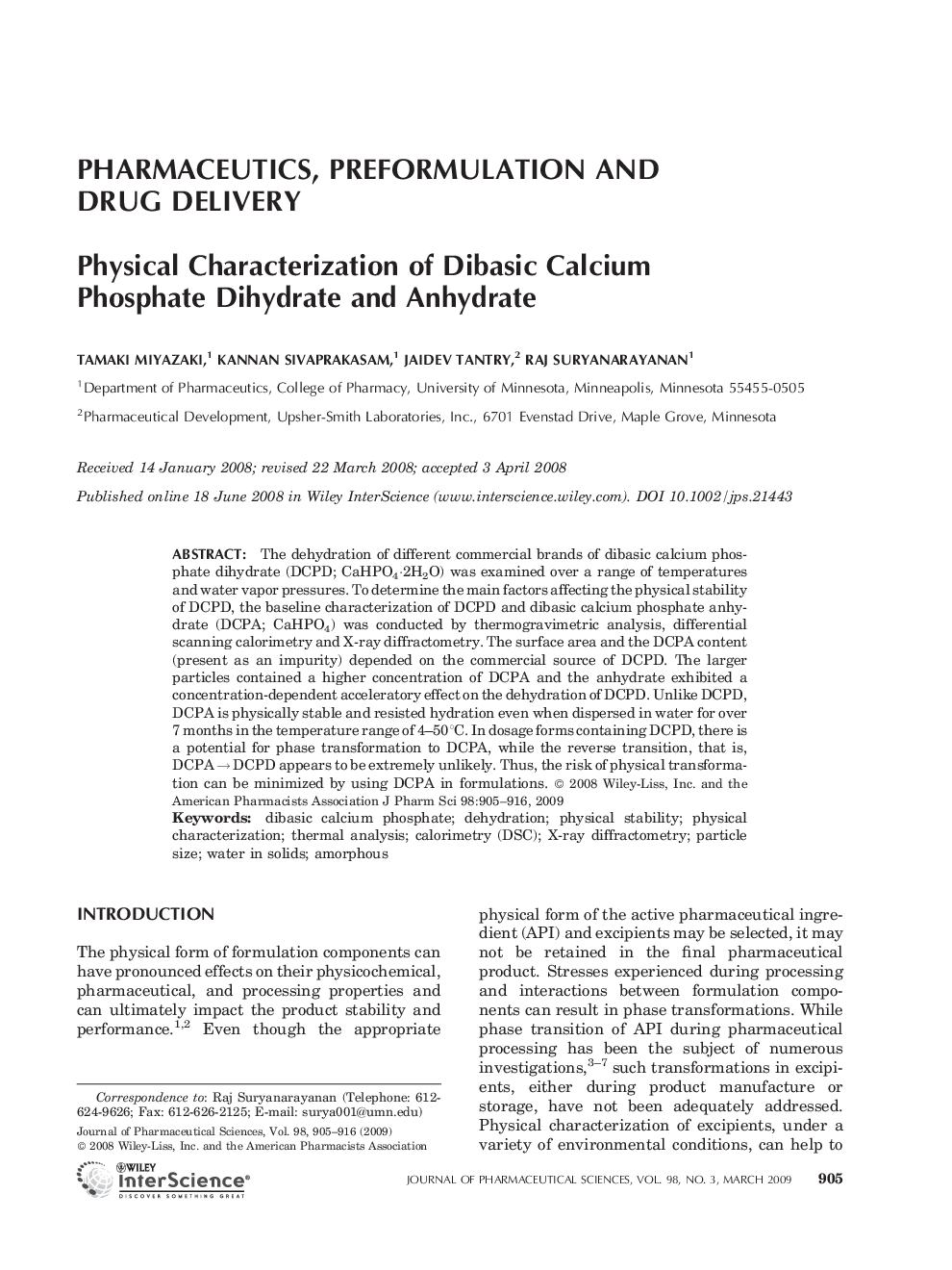| Article ID | Journal | Published Year | Pages | File Type |
|---|---|---|---|---|
| 2486703 | Journal of Pharmaceutical Sciences | 2009 | 12 Pages |
Abstract
The dehydration of different commercial brands of dibasic calcium phosphate dihydrate (DCPD; CaHPO4·2H2O) was examined over a range of temperatures and water vapor pressures. To determine the main factors affecting the physical stability of DCPD, the baseline characterization of DCPD and dibasic calcium phosphate anhydrate (DCPA; CaHPO4) was conducted by thermogravimetric analysis, differential scanning calorimetry and X-ray diffractometry. The surface area and the DCPA content (present as an impurity) depended on the commercial source of DCPD. The larger particles contained a higher concentration of DCPA and the anhydrate exhibited a concentration-dependent acceleratory effect on the dehydration of DCPD. Unlike DCPD, DCPA is physically stable and resisted hydration even when dispersed in water for over 7 months in the temperature range of 4-50°C. In dosage forms containing DCPD, there is a potential for phase transformation to DCPA, while the reverse transition, that is, DCPA â DCPD appears to be extremely unlikely. Thus, the risk of physical transformation can be minimized by using DCPA in formulations.
Keywords
Related Topics
Health Sciences
Pharmacology, Toxicology and Pharmaceutical Science
Drug Discovery
Authors
Tamaki Miyazaki, Kannan Sivaprakasam, Jaidev Tantry, Raj Suryanarayanan,
